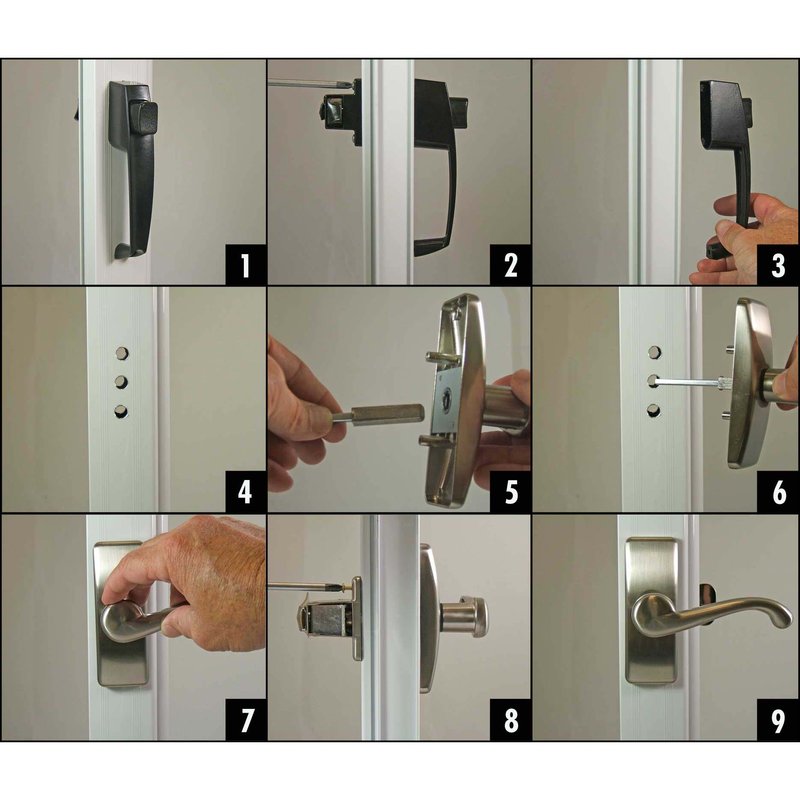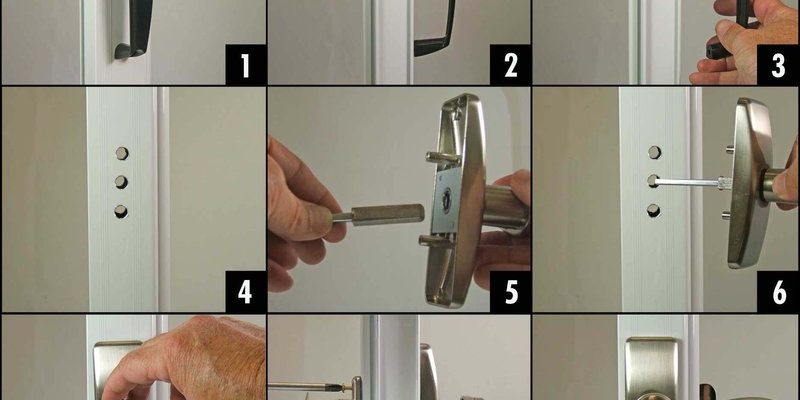
Imagine taking on this task like piecing together a simple puzzle. You don’t need to be a master craftsman to get it done; you just need to approach it step by step. In this guide, we’ll focus on a specific brand—let’s say Schlage, a popular choice in many homes. Whether your door won’t lock, or you’re simply upgrading, understanding how to replace a Schlage interior door knob latch assembly can make you feel like a DIY superstar.
Gather the Necessary Tools and Materials
Before diving into the replacement process, let’s make sure you’ve got everything you need. Here’s what you should gather:
- Screwdriver: A flathead and Phillips screwdriver will do the trick.
- Replacement latch assembly: Get the correct Schlage model for your door.
- Measuring tape: Useful if you’re unsure about sizes.
- Pliers: Handy for any stubborn screws or components.
- Safety goggles: Always good to protect your eyes.
Once you have these tools on hand, you’ll feel more prepared to jump into the task. Honestly, starting with a clean workspace also helps. It’s like setting the table before a meal; it just makes everything smoother.
Remove the Existing Door Knob
Now it’s time to get to the good stuff! Start by removing the existing door knob. If you take a close look, you’ll see that it’s mostly held in place by screws. Here’s how to do it:
1. Locate the screws: Depending on your door knob design, these might be visible on the faceplate or hidden under a decorative cover. If they’re covered, gently pop off the cover with your screwdriver.
2. Unscrew the knob: With the screws exposed, use your screwdriver to loosen and remove them. Be careful not to lose these screws; you’ll need them for the new latch assembly.
3. Detach the knob: Once the screws are out, pull the door knob away from the door. You might need to wiggle it a bit to free it completely.
As you do this, you might be wondering, “What if the knob is stuck?” Don’t panic. If it’s stubborn, a little gentle wiggling and the use of pliers can help. Just make sure not to force it too hard to avoid damaging the door.
Take Out the Existing Latch Assembly
After successfully removing the door knob, the next step is to extract the latch assembly from the door. Here’s how:
1. Identify the latch: You’ll notice the latch mechanism is held in place by screws. These are usually located on the edge of the door.
2. Remove screws: Using your screwdriver, unscrew the latch assembly screws carefully. Remember, if they’re rusted or stuck, a little penetrating oil can help loosen them up.
3. Pull out the latch: Once the screws are removed, simply pull the latch assembly out of the door. This part might take a firm tug, but be gentle to avoid damaging the door.
At this stage, you might think, “Why do I need to replace this?” A faulty latch can lead to security issues or being unable to open your door. It’s essential for both safety and convenience.
Install the New Latch Assembly
With the old latch assembly out, it’s time to install the new one. This is where you start to see progress!
1. Insert the new latch: Take your new Schlage latch assembly and slide it into the opening. Make sure it sits flush with the edge of the door.
2. Align the screws: Once it’s in place, line up the screw holes of the latch assembly with the holes in the door.
3. Secure the screws: Using your screwdriver, tighten the screws to hold the latch securely in place. Be careful not to overtighten, as this can strip the holes.
You might be thinking, “Is it really that simple?” It truly is! This step is often the easiest part of the entire process, and you’re already halfway there.
Reattach the Door Knob
Now comes the moment of truth—reattaching the door knob you removed earlier. Here’s how to do it seamlessly:
1. Position the knob: Align the knob with the latch assembly you just installed. The spindle (the rod that extends from the knob) needs to fit through the latch.
2. Secure with screws: Use the screws you removed earlier to attach the knob to the door. Make sure it’s firmly in place but still allows for smooth turning.
3. Test the mechanism: Before finishing up, give the knob a few turns to ensure it operates smoothly. If all is well, you can proceed.
This is a critical moment. You want to ensure that everything aligns properly and that the knob feels secure. If it feels wobbly, go back and check the screws.
Test the Door Functionality
After putting everything back together, it’s time to test whether your hard work paid off. Here’s how:
1. Open and close the door: Give the door a few gentle pushes to see if it opens and closes smoothly. Check that the latch engages and disengages properly.
2. Lock the door: If your knob has a locking mechanism, ensure that it works as it should. This step is especially important for security.
3. Adjust if necessary: If something doesn’t feel right, don’t hesitate to revisit your installation. Sometimes, a quick adjustment can make all the difference.
Testing the door is like taking a victory lap after a long race. It’s satisfying to see your efforts pay off, and it confirms that everything is in working order.
Final Thoughts and Maintenance Tips
Congratulations! You’ve successfully replaced the latch assembly on your Schlage interior door knob. Taking on a task like this can feel incredibly rewarding. Not only did you save money on a professional, but you also learned a valuable skill that could come in handy down the road.
To keep your new latch assembly functioning smoothly, consider these maintenance tips:
– Regular checks: Occasionally test your door knob and latch to ensure they’re functioning correctly.
– Lubrication: A light oil can help keep the mechanism moving smoothly without turning stiff.
– Secure screws: Periodically check that all screws remain tight, especially if you notice any instability.
By following these steps, you can ensure that your door remains a reliable part of your home. Remember, a well-functioning door knob helps keep your space secure and private, so taking care of it is crucial. Happy DIY-ing!
